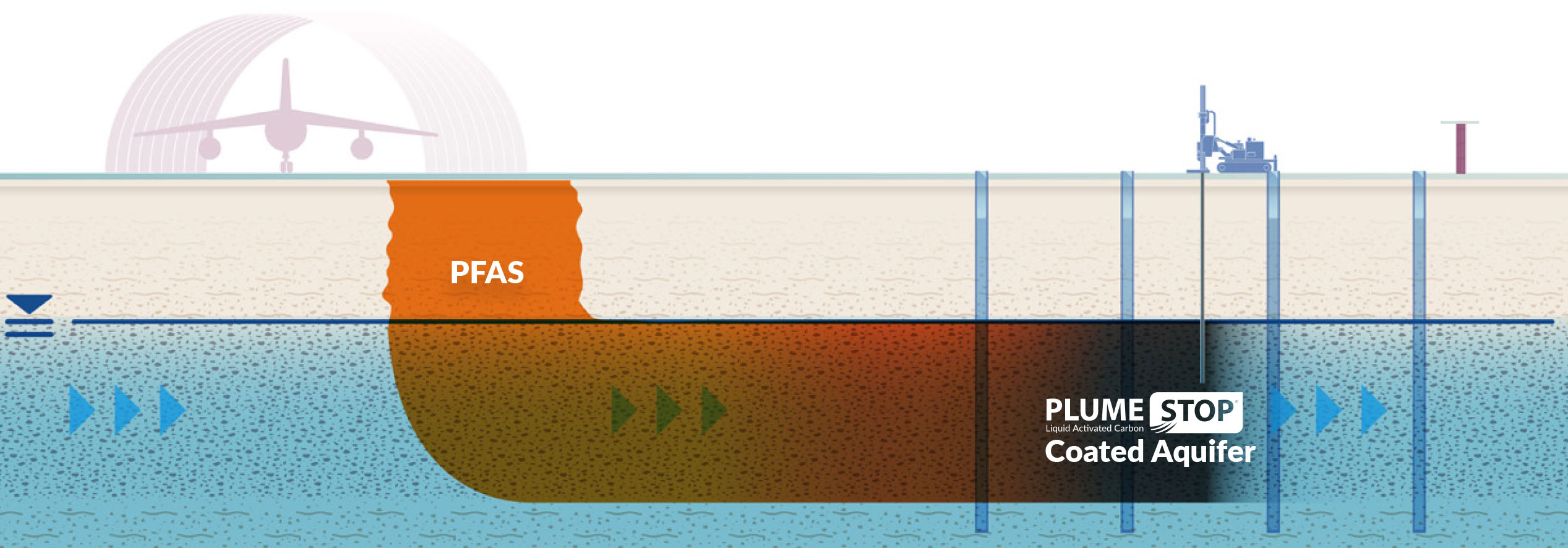Cutting-edge PFAS Therapy Solutions for Safer Water
The boosting prevalence of PFAS contamination in water supplies necessitates a vital evaluation of cutting-edge treatment services. Additionally, emerging bioremediation methods provide a more lasting approach to tackling PFAS difficulties. pfas management.
Overview of PFAS Contamination
PFAS contamination has actually arised as a significant ecological and public health concern. Per- and polyfluoroalkyl compounds (PFAS) are a group of synthetic chemicals recognized for their determination in the environment and human body, leading them to be typically described as "forever chemicals." These compounds have been extensively utilized in various industries, including firefighting foams, water-repellent textiles, and food product packaging, mostly due to their water- and grease-resistant residential properties.
The prevalent use of PFAS has caused their detection in dirt, water supplies, and even in the blood of human beings and animals. Research studies have linked PFAS exposure to countless wellness problems, including developing results in babies, immune system dysfunction, and various types of cancer. In addition, the ecological perseverance of these substances complicates their degradation and elimination, raising worries regarding long-term ecological influences.
Governing bodies are progressively executing rigid standards to keep track of and lower PFAS degrees in drinking water and other environmental mediums. As understanding of PFAS contamination expands, it has become imperative for neighborhoods and industries to seek effective treatment remedies to minimize exposure and safeguard public health and wellness.
Advanced Filtration Technologies
As the necessity to deal with PFAS contamination increases, progressed purification technologies have actually become an essential part in the remediation efforts targeted at eliminating these consistent chemicals from water resources. These technologies take advantage of advanced mechanisms to efficiently target and catch PFAS compounds, which are notoriously immune to conventional treatment methods.
Among one of the most appealing approaches is using granular activated carbon (GAC), which adsorbs PFAS particles due to its high area and permeable structure. This method has been widely carried out in both municipal and industrial settings, demonstrating considerable decreases in PFAS concentrations. In addition, ion exchange materials have actually gained traction, especially designed to selectively bind PFAS ions from water, thus promoting their elimination.
Membrane layer filtration innovations, such as reverse osmosis and nanofiltration, likewise reveal effectiveness in PFAS removal by literally separating impurities from water - pfas management. These systems can achieve high degrees of pureness, making them appropriate for drinking water applications
Chemical Treatment Technologies
Many chemical treatment advancements are being discovered to efficiently address PFAS contamination in water supplies. One appealing approach entails making use of advanced oxidation procedures (AOPs), which use effective oxidants such as ozone, hydrogen peroxide, or chlorine dioxide incorporated with UV light to damage down PFAS compounds into less harmful compounds. This technique has demonstrated effectiveness in laboratory settings, revealing potential for scalability in real-world applications.
One more innovative approach is the growth of ion-exchange resins specifically made to target PFAS. These materials can precisely adsorb PFAS substances from water, permitting their removal throughout treatment processes. Recent developments have actually enhanced the performance and capability of these materials, making them a positive option for water therapy facilities.
In addition, researchers are checking out using chemical agents like persulfate and ferrous ions to boost the degradation of PFAS in infected water. These agents can cause chemical responses that help with the breakdown of relentless PFAS compounds.
Emerging Bioremediation Techniques
Current advancements in chemical therapy technologies have actually paved the way for checking out bioremediation methods as a viable option for resolving PFAS contamination. Bioremediation check over here utilizes the natural metabolic processes of microorganisms to deteriorate or change toxins, making it an enticing method for taking on relentless contaminants like PFAS.
Emerging techniques in bioremediation include making use of genetically engineered microorganisms that can especially target and damage down PFAS substances. These microbial strains are being established for their boosted destruction capacities, increasing the performance of the removal process. In addition, researchers are exploring the possibility of plant-assisted bioremediation, where certain plant species may uptake and sequester PFAS from contaminated dirt and water.
An additional promising technique is the application of bioaugmentation, which entails introducing helpful microorganisms into infected settings to increase the degradation of PFAS. This method can promote faster removal timelines and boost general effectiveness.

Governing Frameworks and Standards
An extensive regulatory framework is important for effectively taking care of PFAS contamination and making certain public wellness defense. The increasing recognition of per- and polyfluoroalkyl substances (PFAS) as environmental pollutants has actually triggered various federal and state companies to develop requirements that govern their presence in water materials. The U.S. Epa (EPA) has actually developed wellness advisories and is pursuing setting enforceable limitations for PFAS in drinking water.
State-level regulations vary substantially, with some states taking on more stringent standards than those suggested by the EPA. These regulations usually include maximum impurity levels (MCLs) for pfas treatment particular PFAS substances, surveillance demands, and reporting obligations for water utilities. Furthermore, emerging frameworks concentrate on the removal of polluted sites, stressing the requirement for effective therapy modern technologies.

Final Thought
Finally, the development and implementation of cutting-edge PFAS therapy services are essential for right here attending to the prevalent issue of water contamination. Advanced filtration modern technologies, chemical treatments, and arising bioremediation methods collectively offer a diverse strategy to effectively minimize and weaken PFAS degrees. As regulative frameworks remain to progress, incorporating these innovations will certainly be vital to safeguard public health and recover the integrity of contaminated water resources, eventually contributing to a cleaner and safer setting.